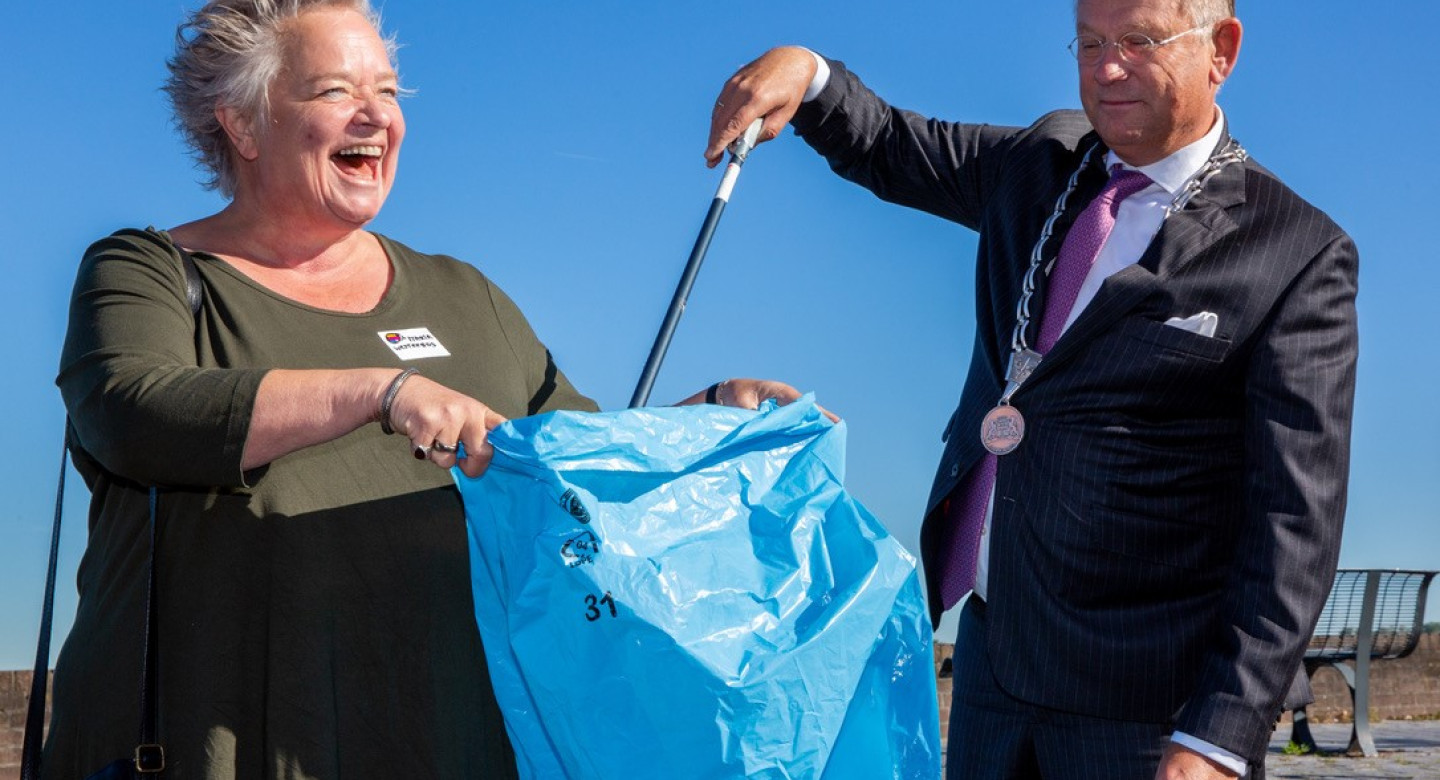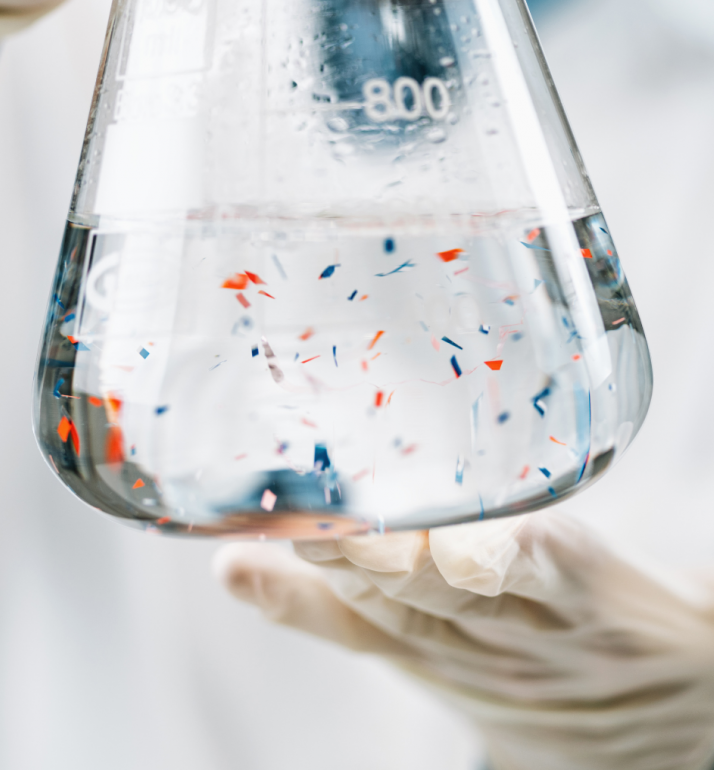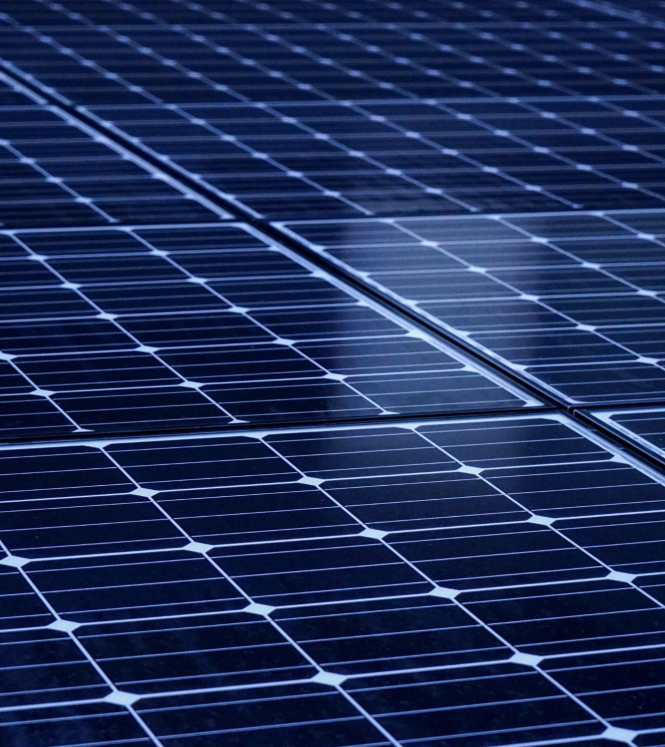

Maria Westerbos on the issue of microplastics
Plastics have been with us for the last 70 years. And once they have been made they remain with us forever. Public awareness has grown since the first gyres of plastic soup were discovered in the Pacific Ocean in the 1990s. Today almost every schoolchild can tell you about plastic soup. But what are microplastics and what happens once they enter the environment? We ask Maria Westerbos founder and director of the Plastic Soup Foundation.
Cleanups help in three ways. First of all, any cleaned area helps to mitigate local ecological harm. It is also an educational tool. People that pick up litter realise the problem and will not litter themselves. For PSF there is an important third reason. We count the brands and hold these brands responsible because it is their packaging we find.
20 September is World Cleanup Day (WCD). This year PSF is organising the WCD for the fifth time in the Netherlands. We engage thousands of volunteers and have a special programme for schools.
When plastics end up in the environment they have the property of binding persistent organic toxins like PCB and dioxins. These substances can build up in the food chain. Plastic is a very persistent material but breaks down under the influences of UV light, oxygen and wave action. Pieces are broken down into ever smaller fragments, the micro- and nanoplastics. All these fragments and toxins affect life (in water and on land) in different ways.
Yes, the number of littered light plastic bags decreased about 70% after the ban in 2016. After the introduction of the deposit return system (DRS) for small plastic bottles in July 2021 we found that the proportion of bottles in the litter decreased by 37% according to the WCD count few months later. We expect the same effect as soon as the DRS is obligatory for cans. Legal measures help far better than voluntary ones.
We also see this in the European Single Use Plastic directive. A number of single use plastics items are forbidden since last Summer, like plastic straws and cutlery. We argue that the government should expand the list of banned products to include items like fireworks containing plastic, plastic confetti and snow, cigarette butts containing plastic, pouches, products made of polystyrene, and more.
The number of littered light plastic bags decreased about 70% after the ban in 2016.
We applaud the EU initiative to prepare legislation to restrict the use of intentionally added microplastics, like in cosmetics. However, the definition used will not cover the majority of microplastics currently in use. Only 4% of the ingredients will be restricted. Also, the proposed transition time of eight years for producers is far too long.
While it is true that the EU restricts the export of plastic waste, it still allows the export of ‘clean’ plastic waste for recycling. Instead, there should be a total ban. That is the only way to stop illegal export and dumping of our waste in other countries. To realise this, coordinated international cooperation is very much needed.
There are still microplastics in these products. According to our own database this is the case for 9 out of every 10 cosmetic products of the major European brands. We analysed 7704 cosmetic and care products using the data we collected through the use of our app Beat the Microbead. There are indeed alternatives.
Over 150 brands got our “Zero plastic Inside” logo for producing microplastic free personal care products. We ask producers not only to stop with the use of plastic as an ingredient (like in the personal care products), but also to critically analyse and reduce their plastic footprint at every production step. Simply put: reduce plastic where-ever you can. But also, do not just switch to alternative materials as they also have an impact on the environment. Better a bag that can be reused over and again than a paper bag.
"Over 150 brands got our 'Zero Plastic Inside' logo for producing microplastic free personal care products."
Polystyrene is indeed among the three types of plastic found most on riverbanks. The solution is very simple: stop with the production and use of polystyrene. Once in the environment it is very hard to get it out, and it easily breaks down in pieces. As soon as you announce a ban, new innovations will conquer the market. In packaging for internet purchases there is already a revolution going on with new carton-based applications. We need companies that operate internationally, to completely stop using plastic.
The Beat the Microbead App informs consumers about the presence of microplastics in their care products, through scanning the labels with a smartphone. Our database of microplastics used in care products contains more than 550 microplastic ingredients. With this evidence we confront the producers. Our App has been downloaded over 450,000 times and is available worldwide. For more information and to download the btmb app see our website.
"Our database of microplastics used in care products contains more than 550 microplastic ingredients."
We need action and measures on all thinkable levels to reduce the use of plastic at source. This year on World Cleanup Day we focus on the role of the Netherlands as exporting country of plastic waste to countries with low income. Much of this plastic is not recycled properly and ends up in the environment. We plea for a total ban of all exports from the European Union of plastic waste, also to prevent illegal transports (plastic is, for instance, often smuggled in containers with paper).
There is much more to do. We should use less new virgin plastic instead of more, we should develop closed loop recycling (not downcycling), we should use safe plastics in regard of the additives used, we should use far less types of plastic and only types that can be recycled. The United Nations are working on a dedicated treaty and that should have binding clauses.
The quick win is to lower the use of single use packaging. We urge supermarkets to develop refill and reuse systems to prevent packaging.
No, I am afraid we will never get rid of them. The problem will get worse, even if we stop using plastic altogether tomorrow, because plastics in the environment will keep breaking down in ever smaller pieces. It is in the air, in our food. We asked researchers of VU University in Amsterdam to analyse meat, milk, blood and animal feed. In almost all of the samples they found microplastics. The type that was most found is polyethylene, which could be an indication that these particles come from single-use packaging. Read the report. We focus on the health impact of plastics and will present the latest scientific research on the third edition of our Plastic Health Summit in May 2023.







